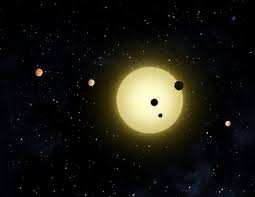What Are Exoplanets?

In a new study, scientists have detected barium in the upper atmosphere of two giant exoplanets for the first time.
- Ultra-hot Jupiters are a class of hot gaseous planets that matches the size of Jupiter, but they have short orbital periods, unlike Jupiter.
What are Exoplanets?
- An exoplanet or extrasolar planet is a planet outside the Solar System. The first confirmation of detection of exoplanets occurred in 1992.
- More than 4,400 exoplanets have been discovered till now.
- They are very hard to see directly with telescopes. They are hidden by the bright glare of the stars they orbit.
- So, astronomers use other ways to detect and study exoplanets such as looking at the effects these planets have on the stars they orbit.
Findings :
- The exoplanets are two ultra-hot Jupiters WASP-76b and WASP-121b which orbit their host stars WASP 76 and WASP 121.
- The former is about 640 light-years away from the Earth and the latter around 900 light-years away.
- Both WASP-76b and WASP-121b complete one orbit in two days.
- Surface temperatures in these bodies reach as high as 1,000 degrees Celsius. These bodies have unique features owing to their high temperatures.
- For instance, WASP-76b experiences iron rain.
- The presence of hydrogen, lithium, sodium, magnesium, calcium, vanadium, chromium, manganese and iron in the atmosphere of the WASP-76 b has also been confirmed in addition to barium.
- In WASP 121b, they confirmed the presence of lithium, sodium, magnesium, calcium, vanadium, chromium, manganese, iron and nickel.
- Additionally, the team found elements such as cobalt and strontium.
- They also found indications of titanium in the exoplanet.




